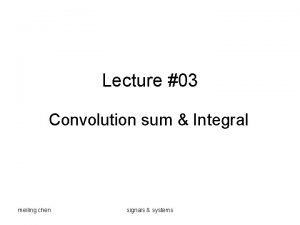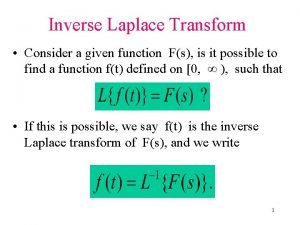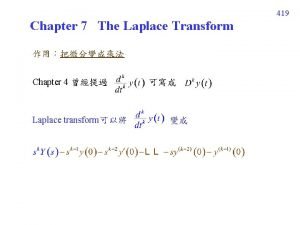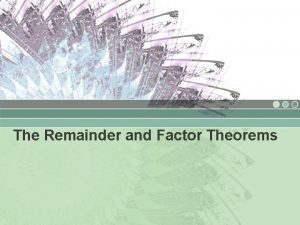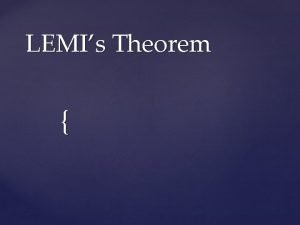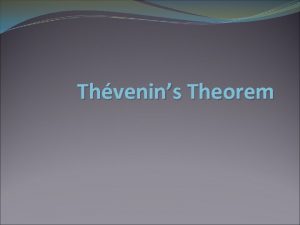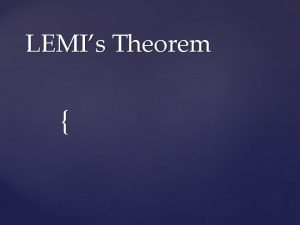Convolution and convolution theorem In this lecture we







- Slides: 7

Convolution and convolution theorem ■ In this lecture we will: ♦ Motivate introduction of convolution by looking at the effect of an RC circuit on a signal. ♦ Look at another example of convolution. ♦ Introduce the (Fourier) convolution theorem. ■ A comprehension question for this lecture: ♦ Calculate the convolution of the functions: • • 1

Effect of RC circuit on signal ■ Consider low pass filter consisting of resistance R and capacitance C. Vin Vout R ■ Rewriting: ■ Solve using integrating factor: C ■ Multiplying through by the IF: ■ Current through resistor ■ Current through capacitor ■ These must be same, so: 2

Effect of RC circuit on signal – convolution ■ Introducing a dummy variable and limits for the integration: ■ You will also see this written: ■ Determine output if ■ We will set things! ■ The result of sending a signal Vin(t) through the filter with response function is given by the convolution of Vin and r: to simplify ■ Integrate by parts once… 3

Effect of RC circuit on signal – convolution ■ ■ Integrate by parts again: ■ Hence: 4

Effect of RC circuit on signal – convolution ■ Look at response of circuit at low and high frequencies: ■ See amplitude change, but also in Vin and Vout in phase for w << 1, Vout lags behind Vin by p/4 for w = 1 and by p/2 for w >> 1. 5

Convolution example ■ Look at functions: ■ ■ And their convolution: ■ For x = 0. 5, 1, 1. 5, 2, 4, 4. 5, 5, 5. 5, we have (L to R, top to bottom): 6

Convolution example Convolution theorem ■ The value of at a given x is the overlapping area of f and g ■ If and ■ Putting the graphs on the previous slide together, is: ■ Using the inverse Fourier Transform, we can write: is the Fourier Transform of f that of g, then: 7
